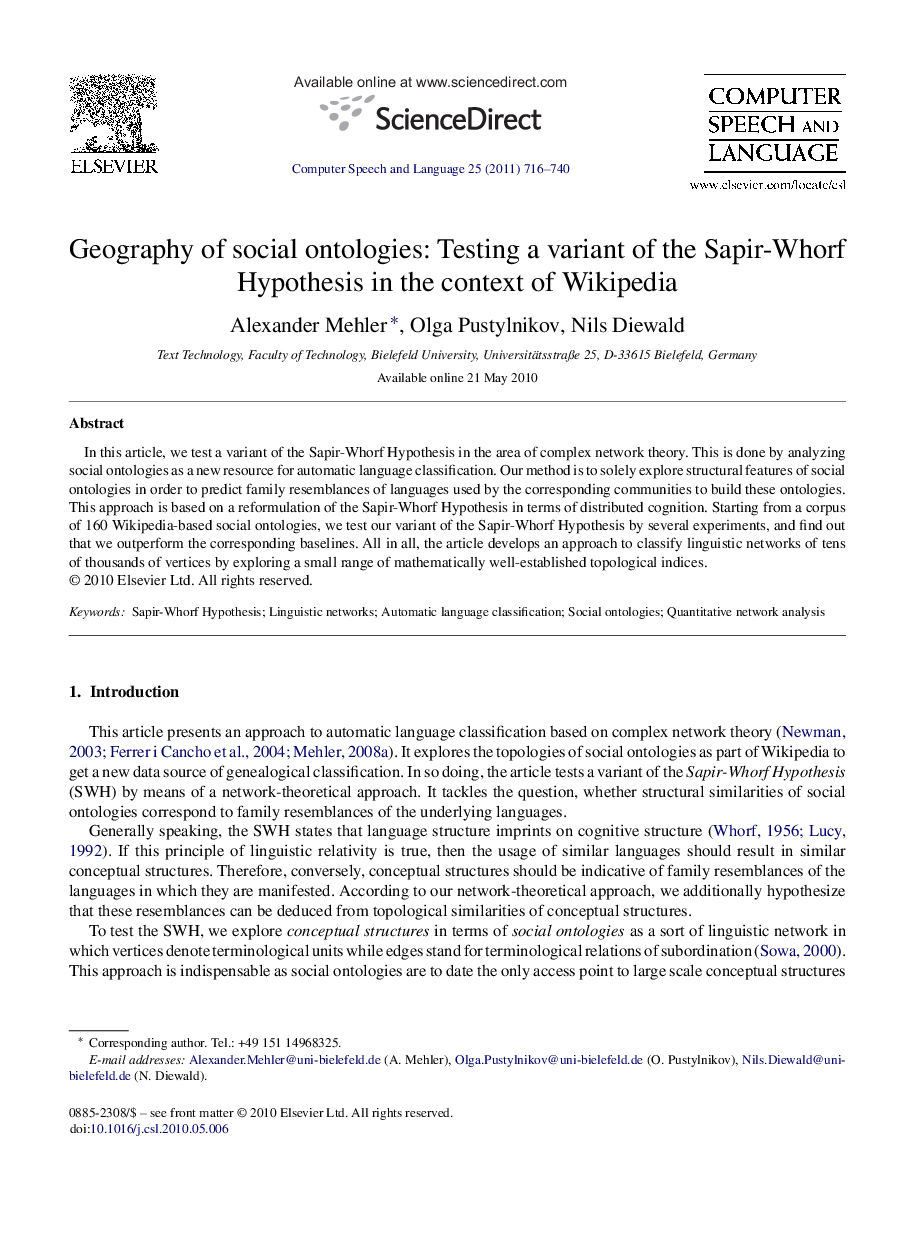| Article ID | Journal | Published Year | Pages | File Type |
|---|---|---|---|---|
| 557943 | Computer Speech & Language | 2011 | 25 Pages |
In this article, we test a variant of the Sapir-Whorf Hypothesis in the area of complex network theory. This is done by analyzing social ontologies as a new resource for automatic language classification. Our method is to solely explore structural features of social ontologies in order to predict family resemblances of languages used by the corresponding communities to build these ontologies. This approach is based on a reformulation of the Sapir-Whorf Hypothesis in terms of distributed cognition. Starting from a corpus of 160 Wikipedia-based social ontologies, we test our variant of the Sapir-Whorf Hypothesis by several experiments, and find out that we outperform the corresponding baselines. All in all, the article develops an approach to classify linguistic networks of tens of thousands of vertices by exploring a small range of mathematically well-established topological indices.
